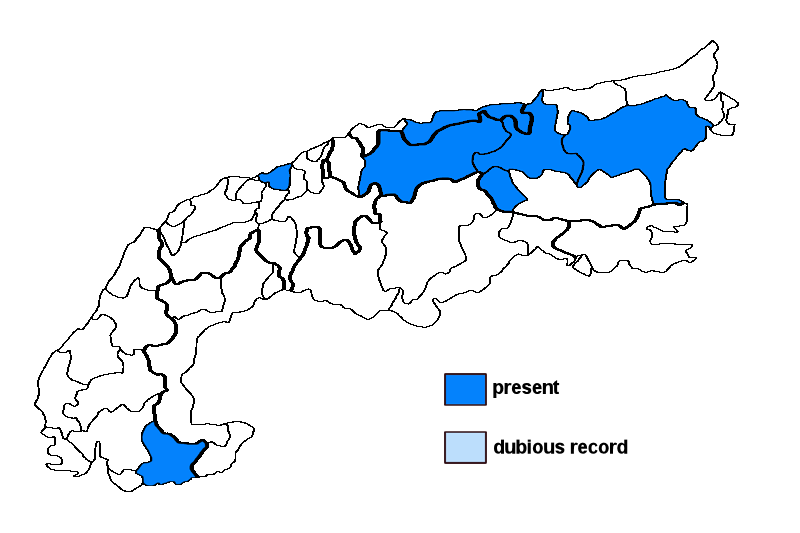Chaenothecopsis viridialba (Kremp.) A.F.W. Schmidt
Syn.: Calicium cinerascens (Nyl.) Zahlbr., Calicium parietinum Ach. var. cinerascens Nyl., Calicium viridialbum Kremp., Mycocalicium cinerascens (Nyl.) Vain.
Non- or doubtfully lichenised.
Substrate: ,
Altitudinal range: from the montane belt (potential vegetation: deciduous forests dominated by Fagus sylvatica and closed coniferous forests with Picea abies) to the subalpine belt (potential vegetation: open, taiga-like forests dominated by Larix decidua and/or Pinus cembra and Rhododendron)
Note: a species with long, slender, pale, pruinose-looking stalks and black, lenticular, later hemispherical capitula, the stalk with a pale central part of periclinally arranged hyphae and an aeruginose outer part with an irregular surface giving a pruinose appearance, hypothecium in lower part with a yellowish red pigment reacting K+ greenish, ascospores simple, ellipsoid, medium brown, with a distinct but minute perisporal ornamentation; on bark and lignum of conifers and deciduous trees, often found together with Chaenotheca chrysocephala; widespread in the temperate zone of the Northern Hemisphere, with scattered records from the Alps, where it is not common.
Austria: Tirol; Salzburg; Steiermark; Germany: Oberbayern; Switzerland: Schwyz; France: Alpes-Maritimes;





